
Andrei Aleksandrovich Zhdanov was a Soviet politician and ideologue. He has been described as the Soviet Union's "propagandist-in-chief" in the 1940s, and was responsible for developing the Soviet cultural policy, the Zhdanov Doctrine, which remained in effect until the death of Joseph Stalin. Zhdanov was considered Stalin's most likely successor but died before him.
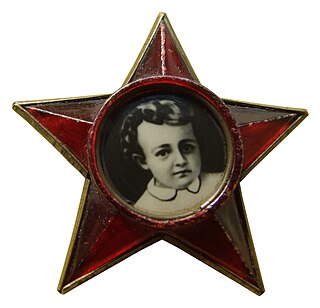
Little Octobrists is a Soviet term that first appeared in 1923–1924, and at that time referred to children born in 1917, the year of the October revolution. Later, the term was used as the name of a youth organization for children between 7 and 9 years of age. After the age of nine, in the 3rd grade, Little Octobrists would typically join the Young Pioneer organization.
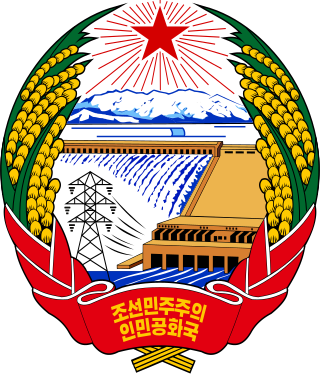
Education in North Korea is universal and state-funded schooling by the government. As of 2021, UNESCO Institute for Statistics does not report any data for North Korea's literacy rates. Some children go through one year of kindergarten, four years of primary education, six years of secondary education, and then on to university. The North Korean state claims its national literacy rate for citizens aged 15 and older is 100 percent.

Palace of Culture or House of Culture is a common name for major club-houses in the former Soviet Union and the rest of the Eastern bloc.
The term Soviet Nonconformist Art refers to Soviet art produced in the former Soviet Union from 1953 to 1986 outside of the rubric of Socialist Realism. Other terms used to refer to this phenomenon are counterculture, "underground art" or "unofficial art".
The Young Pioneers Stadium was a sports complex built in the Soviet Union, intended exclusively for children and youth training, the largest in Europe of this kind. It was located in Moscow. First built at the location in 1926 was a football stadium named after Mikhail Tomsky, used by FC Pishcheviki Moscow that had room for 13,000 spectators. Many other sports buildings were built around the stadium as part of a complex from 1932 to 1934 and included two volleyball grounds, five tennis courts, a cycling track, an indoor ice skating rink, as well as several indoor gyms and choreography halls. Besides that, an Indoor Athletics Area was built there in 1968. The site was reconstructed in 1980 to comply with Olympic standards and the football stadium was used as a venue of the field hockey tournament at the 1980 Summer Olympics, including the final. After that, the complex was again the seat of the Central Children's Training and Competition Complex with more than 2,000 children regularly practicing sports.

The State Kremlin Palace, previously and unofficially known as the Kremlin Palace of Congresses, is a large modern building inside the Moscow Kremlin.
Palace of Sports or Sports Palace is a generic name of comprehensive indoors sports venues introduced in the Soviet Union of big size that includes various sports halls and auxiliary space. Primarily designated to host sports events in front of spectators.

Gennadi Ivanovich Shatkov was a boxer from the USSR, who competed in the Middleweight division during the major part of his career.
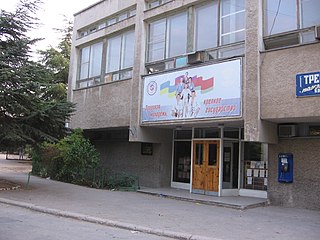
A sports school is a type of educational institution for children that originated in the Soviet Union. Sports schools were the basis of the powerful system of physical culture (fitness) and sports education in the USSR and the Eastern Bloc, particularly East Germany. The main features of this system remain in the system of sports education in Russia and other post-Soviet states, and also became the basis of similar systems in other countries, one of the most powerful ones at the present time being that of the People's Republic of China. Many legendary athletes, such as Nikolai Andrianov, Nellie Kim, Alexander Popov, Viktor Krovopuskov, Vladislav Tretiak, Valeri Kharlamov, Anatoly Alyabyev and Sergey Bubka started their path to Olympic success from Soviet sports schools. They are also found in Asia, in countries such as Singapore, Malaysia and Australia.

The Central Television of the USSR was the state television broadcaster of the Soviet Union.
The year 1922 was marked by many events that left an imprint on the history of Soviet and Russian Fine Arts.

Georgy Maximilianovich Malenkov was a Soviet politician who briefly succeeded Joseph Stalin as the leader of the Soviet Union. However, at the insistence of the rest of the Presidium, he relinquished control over the party apparatus in exchange for remaining Premier and first among equals within the Soviet collective leadership. He then became embroiled in a power struggle with Nikita Khrushchev that culminated in his removal from the premiership in 1955 as well as the Presidium in 1957.
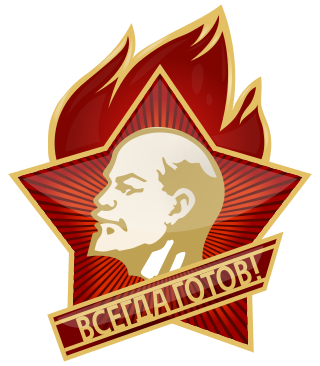
The Vladimir Lenin All-Union Pioneer Organization, abbreviated as the Young Pioneers, was a compulsory youth organization of the Soviet Union for children and adolescents ages 9–14 that existed between 1922 and 1991.
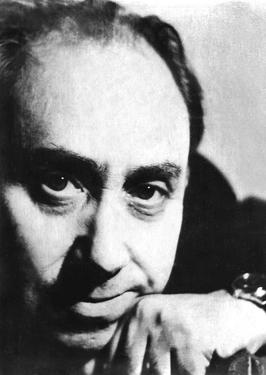
Matvey Grigor'evich Dubrovin. He is the founder of the Theater of Youth Creativity in Leningrad (1956). Honored Cultural Worker of the RSFSR. He developed the theory of integrated education of children through theatrical art. Matvey Dubrovin's method was based on education of a person through the use of theater.
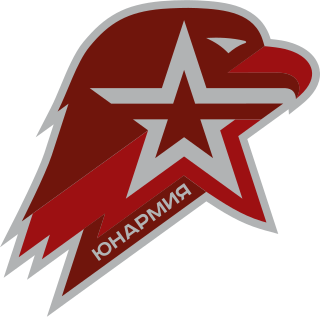
Established in October 2015, the All-Russia "Young Army" National Military Patriotic Social Movement Association is a youth organization supported and funded by the Government of Russia through the Ministry of Defence of Russia (MOD) with a mission to train future personnel for the uniformed services and to instill the values of patriotism, national service, national and military history, remembrance of past military operations and campaigns and of the fallen of its armed forces, and to help develop the country as its population grows.
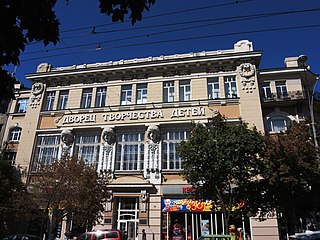
The Palace of Children and Youth Creativity is an educational youth center in Rostov-on-Don, Russia. It works with roughly 1,100 children from ages 5 to 18 and employs 300 educators. It is located in the former Volga-Kama Bank Building, at 55 Bolshaya Sadovaya Street.

The House of Pioneers (Taganrog) is a center for out-of-school-hours activities in Taganrog which existed before 1991

The Taganrog Town Council Building is a mansion in central Taganrog. Located at 87 Petrovskaya Street.

The Almaty Pioneers Palace is a Pioneers Palace, an institution from the Soviet Union to provide after-school education for children, built in Almaty in 1983.

















